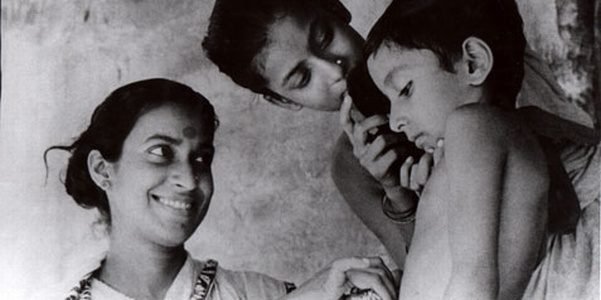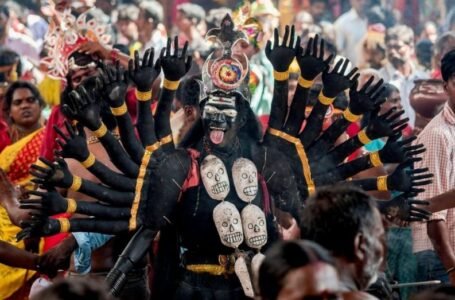“When the World Watched: Non-Western Films That Made Global History”

– Anushka Sengupta
→ Spotlight Parasite, Pather Panchali, Crouching Tiger, Hidden Dragon, and their global cultural breakthroughs
Cinema is a universal language. For more than 100 years, the global cinema stage was heavily influenced by Western, and especially Hollywood narratives. Yet some landmark films from Asia and other non-Western parts of the world broke those cultural and linguistic barriers to receive recognition on the world stage, dismantling stereotypes and reshaping the landscape of global cinema entirely. Movies such as Parasite (2019), Pather Panchali (1955), and Crouching Tiger, Hidden Dragon (2000) did not just receive critical and commercial success, they were cultural moments that forever changed how the world perceived storytelling outside the West. Each of these movies didn’t just move around — they broke through, proving both the universal quality of the human experience and the beauty of local voices.
Parasite (2019): Class Warfare in a Global Language
Directed by Bong Joon Ho, Parasite proved it was not like the other films as it took home the Palme d’Or at the Cannes Film Festival and secured multiple nominationations at the Academy Award where it won the Academy Award for Best Picture, becoming the first non-English language film to achieve such recognition. Set in modern-day South Korea, the film stars the destitute Kim family as they infiltrate into the lives of the privileged Parks using fraudulent yet brilliant methods. What really made Parasite a global phenomenon was not just the craftsmanship of Bong’s direction or genre-blending (thriller, comedy, horror, social satire) but the global issues it addressed: economic inequality, class tension and the illusions of meritocracy. The symbolism of “upstairs vs. downstairs,” the semi-basement dwelling and the rainstorm that quickly turns into a flood resonated with a worldwide audience living in an age of deepening inequality and economic instability. As Bong Joon-ho so famously stated, “Once you get over that one-inch-tall barrier of subtitles, you will be introduced to so many more amazing movies.” Parasite’s greatness, then, did not stop at being an exceptional film, but rather as a powerful cultural turning point that insisted upon the West taking global cinema into account on equal terms.
Pather Panchali (1955): A Humanist Perspective from Rural Bengal
Pather Panchali, the debut film of Indian director Satyajit Ray, was a turning point not just in Indian cinema, but in the history of world cinema. Showcasing the realities of a poor Brahmin family in rural Bengal, the film, which was the first in the Apu Trilogy, was narrated through the eyes of a young boy Apu. Employing a neorealist style, a cast of non-professional actors and natural cinematography, Ray created an intensely moving portrait of the lingering sadness of poverty, the strength of human resilience and the exquisite beauty of life’s simplicity. At a time when Indian cinema was mostly associated with its melodramatic musicals, Pather Panchali unveiled the country’s rich artistic potential infront of international audiences with its humble grace and unflinching earnestness. It went on to win multiple international awards including Best Human Document at Cannes in 1956 which solidified Ray’s reputation as a master filmmaker. Pather Panchali’s global importance is in how it reframed the Indian identity—not by exoticizing it, but by humanizing it. It introduced the world to the dignity of rural life, and the universality of childhood, loss, and hope. The film’s success paved the way for Indian cinema to be respected and seen on the international stage.
Crouching Tiger, Hidden Dragon (2000): Martial Arts Meets Global Elegence
Directed by Ang Lee, Crouching Tiger, Hidden Dragon was an instant classic that redefined martial arts cinema, leading the way for a massive influx of foreign films into the mainstream stage. Set during the Qing Dynasty in China, the film wove together wuxia (traditional Chinese martial arts fantasy) with heartbreaking narratives and stunning, colorful visuals. Starring all of the future international stars: Chow Yun-Fat, Michelle Yeoh, and Zhang Ziyi, it quickly became a global blockbuster. Winning four Academy Awards, including Best Foreign Language Film of the Year, Crouching Tiger, Hidden Dragon introduced Western mainstream audiences to Eastern aesthetics and themes of honor, fate and suppressed emotion. Lee combined breathtaking choreographed combat with a poetic visual representation that invited audiences unfamiliar with wuxia to be carried away by its beauty and ferocity. What made this film historic was just how hard it managed to swing the sword of justice to prove that Asian genre cinema was both commercially viable and critically lauded across the West. It further subverted genre conventions in a quiet but powerful way by putting strong, complex women at the front and center, emphasizing emotional stakes over physical conflict.
Changing the Narrative: The Global Impact
These movies are not just isolated examples of artistic victories, rather they are the momentum of a larger global paradigm shift in cinema. The sheer scale of their success allowed them to redefine what “international cinema” could be—not an exotic sidebar to Hollywood, but a vital, innovative force in its own right. Though firmly planted in the pecularities of South Korean capitalism, the rhythms of rural Indian life, or Chinese legend, all three films’ emotional truths were universal. The impact on values or representation was their most overt way of subverting the norm, these directors were equally groundbreaking in expanding the mainstream’s storytelling technique, utilizing their local cinematic traditions to know, pushing the boundaries of visually and narratively compelling work. Not only did their global success break down barriers for other non-Western filmmakers, it motivated international festivals, distributors, and audiences to look beyond English-speaking cinema. Beyond their own culturure, these films inspired an entire generation of younger filmmakers from the Global South to craft stories authentically, unapologetically in their own voices, languages and settings—with the belief that authenticity would break borders.
When the Margins Became the Center
Parasite, Pather Panchali, and Crouching Tiger, Hidden Dragon are not just brilliant films, they are watershed moments in film history that challenged the hegemony of Western storytelling. They showed the world that breathtaking stories can emerge from the most unexpected corners of the globe, that subtitled films can truly capture hearts around the world, and that emotional truth is a universal language. These films greatly impacted how we come to perceive “foreign” cinema—not as the “other,” but as a reflection of our collective dreams, struggles, and truths. When the world tuned into these stories, it wasn’t just turning into great cinema—it was tuning into a worldwide paradigm shift. In that moment, the room’s screen was not owned by a single ethnic or national identity- it became genuinely ubiquitous.


